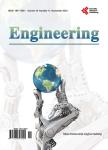Microchip Electrode Development for Traveling wave Dielectrophoresis of Non-Spherical Cell Suspensions
Microchip Electrode Development for Traveling wave Dielectrophoresis of Non-Spherical Cell Suspensions作者机构:Biotechnology of Electromechanics Research Unit Science of Physics Faculty of Technology and Environment Prince of Songkla University Kathu Phuket 83120 Thailand Nano-Electronics and MEMs laboratory National Electronics and Computer Technology Center Pathumthani 12120 Thailand
出 版 物:《Engineering(科研)》 (工程(英文)(1947-3931))
年 卷 期:2012年第4卷第10期
页 面:88-93页
学科分类:1002[医学-临床医学] 100214[医学-肿瘤学] 10[医学]
主 题:Traveling wave Dielectrophoresis Microchip Interdigitated Electrode Cell Suspensions Dielectric Properties
摘 要:A microchip interdigitated electrode with a sequential signal generator has been developed for traveling wave dielectrophoresis (twDEP) of biological cell suspensions. The electrode was fabricated on a microscope glass slide and coated with a 0.5 μm thickness of gold through a sputtering technique which was designed for large-scale inductions of cells rather than for individual cells as in previous versions of our device. As designed for a representative cell size of 10 μm, the electrode array was 50 μm in width to allow large numbers (106) of cells to be processed. The sequential signal generator produces an arbitrary AC quadrature-phase to generate traveling electric field for a microchip interdigitated electrode. Each phase signal can be automatically altered and alternated with the other phases within interval time of 0.01-30 seconds (controlled by programming). We demonstrate the system could be used to estimate the dielectric properties of the yeast Saccharomyces cerivisiae TISTR 5088, the green alga Tetraselmis sp. and human red blood cells (HRBCs) through curve-fitting of dielectro- phoretic velocities and critical frequencies.



